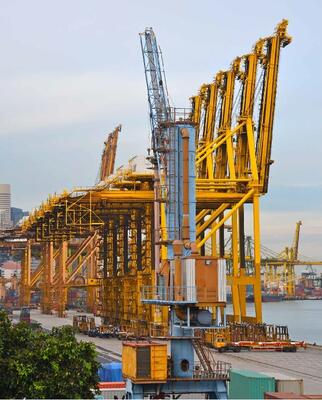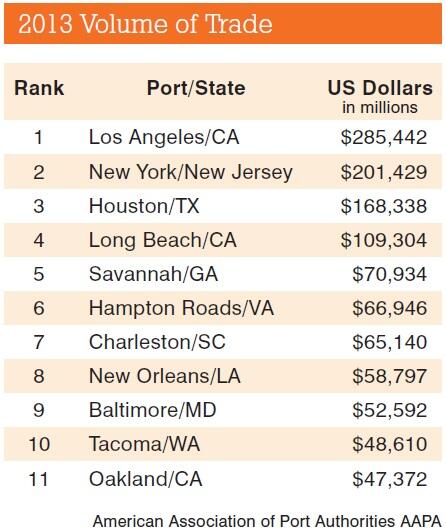
Cities driving regional growth
Stamford Raffles, then the Governor-General overseeing Singapore, declared the city a free and open port in 1823. Singapore had experienced rapid growth since Raffles’s first development plan for the city was laid out in 1819. And, while economic advancement has had its ups and downs over the past two centuries, the bold free-port declaration created a foundation for the vibrant, developed, global city-state we see today.
Raffles was a bit of an outlier and his focused acceleration of Singapore’s trade brought about a new phase of development. He positioned Singapore on a competitive footing with ports in the region, including the Dutch East Indies ports in present day Indonesia. His idea was so successful that Singapore’s port traffic grew by nearly five times over the next 10 years (Moving People, Goods and Information in the 21st Century: The Cutting-Edge Infrastructures of Networked Cities, Richard Hanley, 2004).
Globalization brought about more seamless supply chains in the 20th century as well as more transparency around international commerce. Competitive moves such as Raffles’s are not uncommon today, though they are less focused on tariff removal than on infrastructure improvement. In fact, they have become the norm as local, regional and national trade development and inward investment agencies rival one another for economic growth.
But is the competition at local and regional levels a threat to the national interest or a necessary adjustment to attract capital and export revenues? And is trade development a central-government or city-led
activity?
The simple answer in the current phase of globalization is that it is both. Heavy trade development activity in recent decades seems to have focused on alleviation
of either port-specific inefficiencies or supply chain bottlenecks, leading to reconfiguration of supply chain patterns.
In many cases competitive port development has actually helped, rather than hurt, regional and national development.
One of the most revealing cases lies in the Pearl River delta. For much of the late 20th century, Hong Kong was the de facto point of entry for China’s manufacturing heartland. It had a modern port and warehousing facilities, a nearby airfreight hub for urgent cargo and trade finance and insurance services – very little of which could have been easily found in southern China until the turn of the 21st century.
As China’s transport infrastructure and support services have developed, Chinese ports in the delta have benefitted. Guangzhou has shown gains as vessels bypass Hong Kong, the traditional trans-shipment hub for China trade, and head directly to the heart of the delta’s manufacturing area. Developments such as the Guangzhou Economic and Technological Development District have gained by the move.
According to the World Shipping Council, Hong Kong’s containerized volume declined by 8% between 2011 and 2013, falling from 24.38 million twenty-foot equivalent units (TEU) to 22.35 million. In fact, the nearby port of Shenzhen surpassed Hong Kong for the first time in 2013, with 23.28 million TEU, growing 3% since 2011. Guangzhou grew 6% over the same period to reach 15.31 million TEU and it has shown 7.9% growth through September 2014.
While regional development agencies in the delta have, no doubt, been promoting mainland ports, Hong Kong has had its own capacity and productivity liabilities even after shifting its focus from direct shipments to transshipments due to mainland port competition. An October 2014 report from CargoSmart, a global logistics software and industry intelligence firm, shows that Hong Kong has had a rising trend of arrival delays since March 2014 while delays at Shenzhen and Guangzhou have been less serve. The Port Productivity database of the Journal of Commerce, a global supply chain media firm, reveals that Hong Kong ranked near the bottom of major mainland ports for 2013.
Regional competition for trade development in the delta has been fierce over the past two decades, corresponding with a period of rapid growth in China’s manufacturing heartland. Hong Kong has remained a leading maritime cluster in terms of regulation, taxation, workforce skills and green facilities, according to the Organisation for Economic Co-operation and Development (The Competitiveness of Global Port-Cities: the case of Hong Kong – China, Merk and Li, 2013).
However, the quality gap that once benefitted Hong Kong over mainland ports has largely disappeared. While city-led trade development efforts have eroded Hong Kong’s leadership position, they have benefitted both regional and national productivity and manufacturing output to enable China’s mammoth export-led growth over the last decade. We find a different, evolving case in the United States of America, with competition between the ports of Los Angeles-Long Beach and Oakland. West Coast ports have competed for decades, with Oakland’s position declining in the 1990s dropping it to the 11th-largest port in the United States. Success for Los Angeles-Long Beach has brought overload, however, with regard to capacity and labour issues.
While this is not new, congestion and cost are growing concerns due to a combination of increased seasonal demand, equipment shortages, accommodation of larger vessels, and labour disputes leading to normal delays of seven to 10 days. Not only that, the situation may be getting worse. A recent survey by the Journal of Commerce found that 97% of shippers are being hurt by congestion at Los Angeles-Long Beach and 67% expect the situation to deteriorate.
A 2013 modernization project at the Port of Oakland aimed to convert the decommissioned Oakland Army Base into an ultra-efficient intermodal port. The US$7.8 billion project will link vessels directly to rail facilities, warehouses and docks; upgrade roads and highways connecting to the terminal; improve safety of freight and passenger traffic; and decrease emissions. While this innovative plan is still under way, the outcome will likely create a more efficient regional supply chain, with competition for city-led trade development helping both the regional and national economies.
In the same way Hong Kong’s legacy structures begged improvement of Pearl River delta trade flows, city-based trade developments on the West Coast of the United States and elsewhere support both shippers and larger regional economies. The competitive efforts of Stamford Raffles nearly 200 years ago helped create one of the largest ports in the world that in turn supports an efficient, regional trade ecosystem, demonstrating the enduring and far-reaching benefits of city-based trade development.













